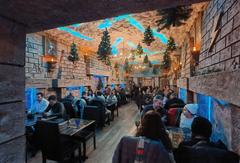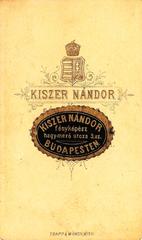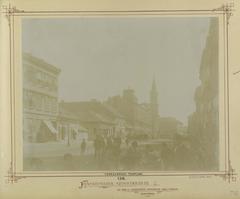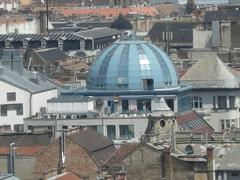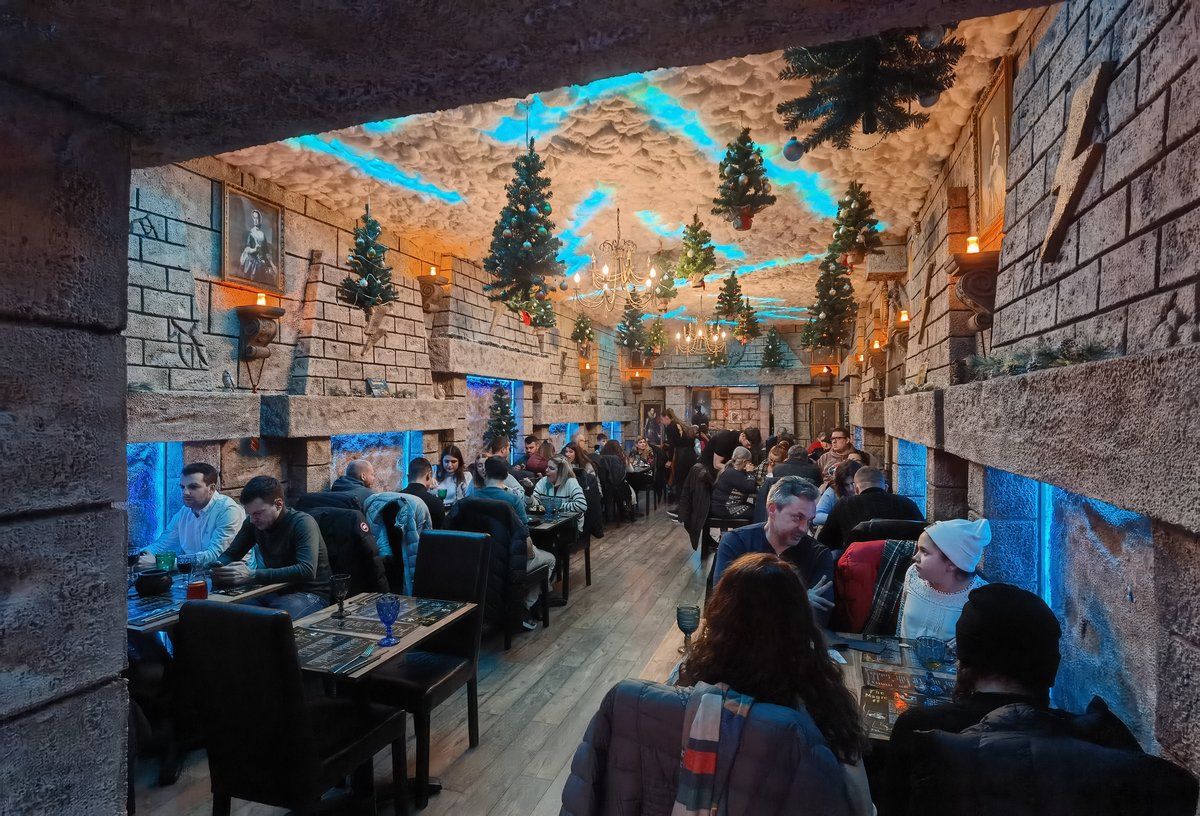
Nagymező Street Budapest: Visiting Hours, Tickets, and Historical Sites Guide
Date: 15/06/2025
Introduction: Nagymező Street’s Historical Significance and Visitor Overview
Nagymező Street, often referred to as the “Broadway of Budapest” or “Pesti Broadway,” is a lively artery at the heart of Hungary’s capital, celebrated for its cultural richness and historical depth. Situated in District VI and running parallel to the UNESCO World Heritage-listed Andrássy Avenue, Nagymező Street has transformed from its 19th-century rural beginnings into a thriving hub for theaters, galleries, cafés, and nightlife. The street is home to iconic venues such as the Budapest Operetta Theatre and Thália Theatre, offering everything from operettas and musicals to avant-garde performances. It also hosts contemporary cultural landmarks, including the Robert Capa Contemporary Photography Center, reflecting Budapest’s ongoing embrace of the arts.
The street’s architectural landscape is equally striking, featuring buildings with eclectic and Art Nouveau facades, some designed by renowned architect Miklós Ybl, who also created the nearby Hungarian State Opera House. Nagymező Street’s proximity to other cultural and nightlife hotspots, such as the Jewish Quarter’s famous ruin pubs, makes it a focal point for both locals and visitors seeking immersive cultural experiences. Festivals and open-air events further enliven the area, ensuring there is always something to discover, regardless of the season.
This comprehensive guide provides essential information on visiting hours, ticketing, the street’s historical background, nearby attractions, accessibility, and practical tips—making it an indispensable resource for anyone planning to explore one of Budapest’s most iconic destinations (Budapest by Locals, We Love Budapest, Official Hungarian State Opera House).
Table of Contents
- Introduction
- Historical Evolution of Nagymező Street
- Cultural Significance
- Essential Visitor Information
- Frequently Asked Questions (FAQ)
- Visuals and Media
- Conclusion
- Sources and Further Reading
Historical Evolution of Nagymező Street
Origins and Urban Development
The origins of Nagymező Street trace back to the 19th century, when it served as a rural thoroughfare. Its name, meaning “Great Field,” reflects its pastoral past before Pest’s rapid urban expansion. The development of Andrássy Avenue in the late 1800s, modeled after Paris’ Champs-Élysées, positioned Nagymező Street as a vital cultural and social corridor. During this era, elegant townhouses and cultural institutions began lining the street, attracting artists and intellectuals, thanks in part to the nearby Hungarian State Opera House, completed in 1884 (Budapest by Locals).
The Rise of “Pesti Broadway” and Architectural Heritage
By the early 20th century, Nagymező Street had earned its “Pesti Broadway” moniker, thanks to the concentration of theaters such as the Budapest Operetta Theatre and Thália Theatre. The street’s buildings display eclectic and Art Nouveau influences, with notable work by Miklós Ybl, further enhancing the area’s cultural prestige (We Love Budapest).
Twentieth-Century Transformations and Recent Revitalization
The 20th century brought both challenges and renewal. Under socialist rule, some theaters faced neglect, but post-communist revitalization efforts have restored the street’s historic facades and ushered in new cultural venues, such as the Robert Capa Contemporary Photography Center (opened in 2013). Today, Nagymező Street stands as a dynamic symbol of Budapest’s artistic spirit (We Love Budapest).
Cultural Significance
Performing Arts and Theaters
Nagymező Street is the heart of Budapest’s performing arts scene, featuring:
- Budapest Operetta Theatre: Founded in 1923, it specializes in operettas and musicals, with box office hours from 10:00 AM to 6:00 PM (Mon–Sat). Tickets range from 3,000 to 8,000 HUF, available online or at the venue (Budapest Operetta Theatre).
- Thália Theatre: Established in 1913, known for both Hungarian and international plays. Box office hours are 11:00 AM to 7:00 PM (weekdays); tickets can be purchased via the official site.
- Radnóti Miklós Theatre: Focuses on modern and classic drama. Ticket office: 10:00 AM–6:00 PM; tickets from 1,500 to 4,000 HUF (Radnóti Miklós Theatre).
- Mai Manó House (Hungarian House of Photography): Open Tues–Sun, 10:00 AM–6:00 PM; entry around 1,200 HUF. Showcases rotating photography exhibitions and workshops (Mai Manó House).
- Robert Capa Contemporary Photography Center: Open Tuesday–Sunday, 10:00 AM–6:00 PM; admission around 1,500 HUF (We Love Budapest).
Artistic and Intellectual Legacy
Nagymező Street has long been a meeting point for artists, writers, and intellectuals. Its cafés and salons fostered creative exchange, a tradition that continues with today’s stylish coffeehouses and bistros (Bar Crawl Budapest).
Architectural Heritage
The street is renowned for its:
- Art Nouveau and Eclectic Façades: Ornate balconies, stained glass, and ironwork.
- Teresa of Avila Parish Church: A historic landmark with a tower designed by Miklós Ybl.
- Historic Residences: Once home to some of Hungary’s most celebrated cultural figures.
Nightlife and Social Scene
Nagymező Street offers vibrant nightlife with a wide variety of bars, cafés, and restaurants. Its closeness to the Jewish Quarter—home to Budapest’s famous ruin bars—adds to the area’s appeal for night owls and culture seekers (Bar Crawl Budapest).
Festivals and Events
The street hosts open-air performances, cultural festivals, and special events, especially in summer. Highlights include the Budapest Spring Festival and Night of Theatres, as well as outdoor concerts and holiday markets (Budapest by Locals).
Essential Visitor Information
Visiting Hours and Ticketing
- Theaters: Box offices typically operate from 10:00 AM to 7:00 PM (Monday–Saturday). Evening performances usually start between 7:00 PM and 8:00 PM. Online purchase is recommended, especially for popular shows.
- Museums/Galleries: Most open 10:00 AM–6:00 PM, closed Mondays.
Navigating Nagymező Street
- Location: Runs parallel to Andrássy Avenue, between Király Street and Bajcsy-Zsilinszky Road in District VI.
- Public Transport: Easily accessible via the M1 metro line (Opera and Oktogon stations), as well as several tram and bus lines (Budapest by Locals).
- On Foot: Pedestrian-friendly with wide sidewalks; most attractions are within walking distance.
Dining and Nightlife
- Restaurants and Cafés: Range from traditional Hungarian to international cuisine. Popular options include N28 Wine and Kitchen, Menza, Gettó Gulyás, TWENTYSIX Budapest, and St Andrea Wine & Gourmet Bar.
- Nightlife: From cozy bars to rooftop lounges like 360 Bar, and easy access to the Jewish Quarter’s legendary ruin pubs.
- Reservations: Recommended for restaurants and special events, especially on weekends.
Cultural Etiquette and Safety
- Attire: Smart-casual recommended for theater evenings.
- Language: English is widely spoken; using basic Hungarian phrases is appreciated.
- Tipping: 10–15% customary unless service charge is included.
- Safety: The area is safe; standard urban precautions apply.
Accessibility
- Venues: Most major theaters and restaurants provide accessible entrances and facilities; some historic sites have limitations.
- Special Needs: Contact venues directly for tailored assistance or detailed accessibility information.
Notable Nearby Attractions
- Andrássy Avenue: A World Heritage boulevard with luxury shops and museums.
- Liszt Ferenc Square: Bustling with cafés and live music.
- Jewish Quarter: Famous for its synagogues, ruin pubs, and street art.
- House of Terror Museum: Explores Hungary’s 20th-century history.
Frequently Asked Questions (FAQ)
Q: What are Nagymező Street’s visiting hours?
A: The street itself is accessible at all times. Theaters and galleries typically operate from mid-morning to early evening; performances are usually in the evenings.
Q: How do I buy tickets for events?
A: Tickets are available online via official theater websites or at box offices. Early booking is advised, especially for high-demand shows.
Q: Are English-language performances available?
A: Some venues offer English subtitles or host English-language productions. Check performance details in advance.
Q: Is Nagymező Street wheelchair accessible?
A: Many venues are accessible, but some historic buildings may have limitations. Contact individual venues for specifics.
Q: What is the best way to reach Nagymező Street?
A: The M1 metro line (Opera or Oktogon stations) is closest. Multiple tram and bus routes also serve the area.
Visuals and Media
- Interactive map of Nagymező Street
- Virtual tours available on official theater websites
- Suggested images:
- Nagymező Street Budapest historic theaters
- Robert Capa Photography Center Budapest
- Grand Neo-Renaissance facade of the Hungarian State Opera House (Opera House image)
Conclusion
Nagymező Street stands as an essential destination for anyone seeking to experience the artistic soul of Budapest. Its theaters, architectural gems, and buzzing nightlife offer a blend of tradition and innovation, while its central location ensures easy access to the city’s top cultural and historical sites. For a seamless visit, check event schedules, book tickets in advance, and plan to explore both day and night.
For event updates and insider tips, download the Audiala app and follow our social media channels. Whether your interests lie in theater, dining, or nightlife, Nagymező Street promises a memorable Budapest experience.
Internal Links
- Top Budapest Attractions to Visit
- Guide to Budapest’s Theater Scene
- Budapest Nightlife Hotspots
- Cultural Festivals in Budapest
Sources and Further Reading
- Budapest by Locals – Cultural Venues in Budapest
- We Love Budapest – Walk Down Nagymező: The Broadway of Pest
- Time Out Budapest – Best Nightlife in Budapest
- Official Hungarian State Opera House
- Bar Crawl Budapest – Best Streets in Budapest
- The Crazy Tourist – 25 Best Things to Do in Budapest
- Budapest by Locals – Visit Budapest in June
- Mai Manó House
